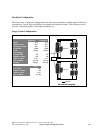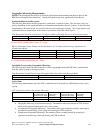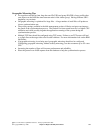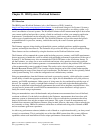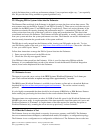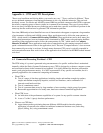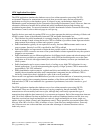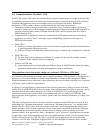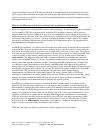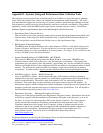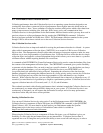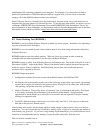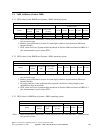
A.2 Compute Intensive Workload - CIW
Unlike CPW values, CIW values are not derived from specific measurements of a single workload. They
are modeled projections which are based upon the characteristics of internal workloads such as Domino
workloads and application server environments such as can be found with SAP or JDEdwards
applications. CIW is meant to depict a workload that has the following characteristics:
y The majority of the system procession time is spent in the user (or software supplier) application
instead of system services. For example, a Domino Mail and Calendar workload might spend 80% of
the total processing time outside of OS/400, while the CPW workload spends most of its time in
OS/400 database code.
y Compute intensive applications tend to be considerably less I/O intensive than most commercial
application processing. That is, more time is spent manipulating each piece of data than in a
CPW-like environment.
y What CIW is
Indicator of relative performance in environments where a significant amount of transaction time
is spent computing within the processor
Indicator of some of the differences between this type of workload and a "commercial" workload
y What CIW is not:
An indication of the performance capabilities of a system for any specific customer situation
A measure of pure numeric-intensive computing
y When to use CIW data
Approximate product positioning between different iSeries or AS/400 models where the primary
application spends much of its time in the application code or middleware.
What guidelines exist to help decide whether my workload is CIW-like or CPW-like?
An absolute assignment of a workload is difficult without doing a very detailed analysis. The general
rules listed here are probable placements, but not absolute guarantees. The importance of having the two
measures is to show that different workloads react differently to changes in the configuration. IBM's
Workload Estimator tries to take some of these differences into account when projecting how a workload
will fit into a new system (see Appendix B.)
In general, if your application is online transaction processing (order entry, billing, accounts receivable,
and the like), it will be CPW-like. If there are many, many jobs that spend more time waiting for a user to
enter data than for the system to process it, it is likely to be CPW-like. If a significant part of the
transaction response time is spent in disk and communications I/O, it is likely to be CPW-like. If the
primary purpose of the application is to retrieve, process, and store database information, it is likely to be
CPW-like.
CIW-like workloads tend to process less data with more instructions than CPW-like workloads. If your
application is an "information manipulator" rather than an "information processor", it is probable that it
will be CIW-like. This includes web-servers where much time is spent in generating and sending web
frames and pages. It also includes application servers, where data is received from end-users, massaged
and formatted into transaction requests, and then sent on to another system to actually service the
database requests. If an application is both a "manipulator" and a "processor", experience has shown that
enough time is spent in the manipulation portion of the application that it tends to be the dominant factor
and the workload tends to be CIW-like. This is especially true of applications that are written using
"modern" tools like Java, WebSphere Application Server, and WebSphere Commerce Suite. Another
IBM i 6.1 Performance Capabilities Reference - January/April/October 2008
© Copyright IBM Corp. 2008 Appendix A - CPW and CIW Descriptions 338



